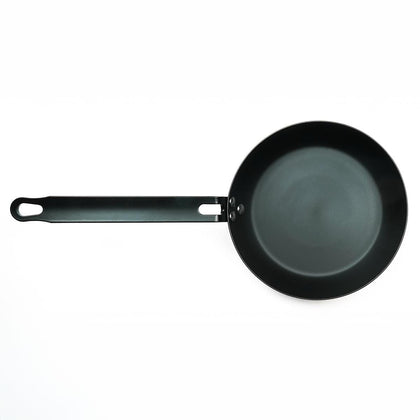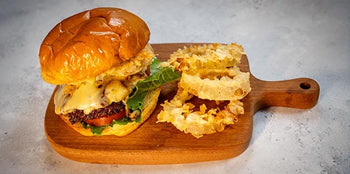Salmon is one of the most versatile, flavourful, and nutritious proteins you can cook at home. When prepared properly, it delivers a wonderful contrast between the crackling, golden-brown skin and the buttery, tender flesh beneath. Yet, achieving that balance requires a few key tricks. We’re going to cover everything you need to know to make your salmon dish truly shine.
Step 1: Choosing the Salmon
Perfecting crispy salmon starts at the fish counter. Look for these indicators of a fresh, high-quality fillet:
Colour: Opt for salmon with vibrant, rich hues (whether deep red or bright pink, depending on the variety). Avoid fish with brown spots or discoloured edges. Farmed salmon is typically lighter in colour with obvious fat marbling. Wild (Atlantic) salmon is usually darker, more vibrant colour with a firmer texture. Wild salmon is leaner, so it requires a bit more attention to avoid overcooking.
Smell: Fresh salmon should have a clean, ocean-like aroma—not a strong, fishy smell.
Firmness: The flesh should bounce back when gently pressed, indicating freshness.
Step 2: Preparing Your Salmon Fillet
Once you have your beautiful salmon fillet, preparation is key to achieving that crispy skin without sticking to your pan.
1. Salt Both Sides
Generously salt both the skin and the flesh side of the salmon. This not only seasons the fish but also helps draw out excess moisture, which is critical for crisping the skin.
Quick tip: Let the salmon sit at room temperature for about 10 minutes after drying to ensure even cooking.
2. Pat It Dry
Using kitchen paper, pat both sides of the salmon completely dry. Moisture is the enemy of crispy skin—even a little dampness will cause the fish to steam instead of sear.
Step 3: Choosing and Heating Your Pan
The type of pan you use plays a major role in your salmon’s final texture. Here’s what works best:
Carbon steel pans: Ideal for even cooking and achieving that perfect crispy crust. Plus, a well-seasoned carbon steel pan ensures the salmon won’t stick.
Cast iron pans: Also great for retaining and evenly distributing heat.
Stainless steel pans: Work well with enough oil and proper preheating. You’ll need to add a bit more oil than with other pans and extra patience—let the salmon cook undisturbed without constantly flipping it for the best results.
Non-stick pans are easy to cook with, but you won’t be able to rank the heat up, so you can’t get that perfect golden effect.
Step 4: Cooking the Salmon
Now for the exciting part: cooking the salmon to crispy perfection!
1. Preheat the Pan
Preheat your pan over medium-low heat. If the pan isn’t hot enough, the salmon will stick, while a pan that’s too hot will burn the skin before the fish cooks through.
2. Place the Salmon
Place the salmon skin side down in the pan. Press gently with a steak press to ensure even contact with the pan.
3. Cook for 3 Minutes
Let the salmon cook undisturbed for about 3 minutes. Watch as the colour change gradually creeps up the fillet, cooking from the bottom up. When the colour has changed about halfway through the fillet, it’s time to flip.
4. Flip
Using tongs or a fish spatula, carefully flip the salmon. Cook for 1 minute on the flesh side, allowing it to take on a light golden crust while maintaining a tender interior. For a well-done finish, cook for an extra 2 minutes on the top side.
5. Add Butter
In the last minute of cooking, add a knob of butter to the pan. Tilt the pan slightly and use a spoon to baste the salmon with the melted butter. This adds a rich, glossy finish and enhances the flavour.
6. Rest Before Serving
Once cooked, transfer the salmon to a plate and let it rest for a couple of minutes. This allows the juices to redistribute and ensures every bite is succulent.
Serving Ideas
We served the crispy salmon with our radicchio clementine salad, which brings a perfect balance of bitter and sweet. You can also serve it with the following ideas:
Pair with a refreshing mango and avocado salad, drizzled with a citrus dressing. The sweetness of the mango complements the richness of the salmon beautifully.
Serve with a warm quinoa salad, mixed with olives, cherry tomatoes, and a tangy feta dressing.
Roasted butternut squash and a walnut, arugula, and pomegranate salad.
Serve with a crunchy sesame and cucumber slaw, topped with a soy-lime dressing. The lightness of the slaw and umami of the soy sauce make it a delightful combo.
A mint, dill, and cucumber salad with a lemony yogurt dressing—cool and refreshing to complement the crispy salmon.




